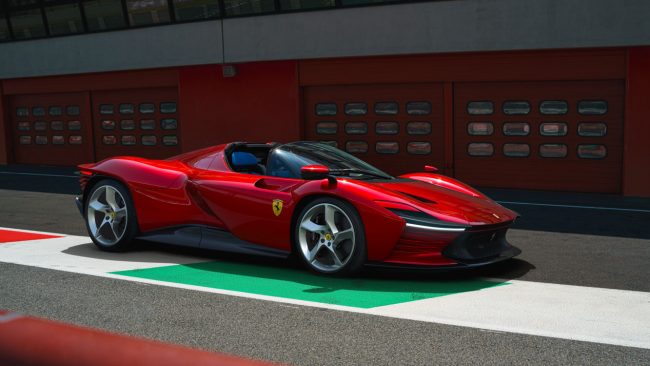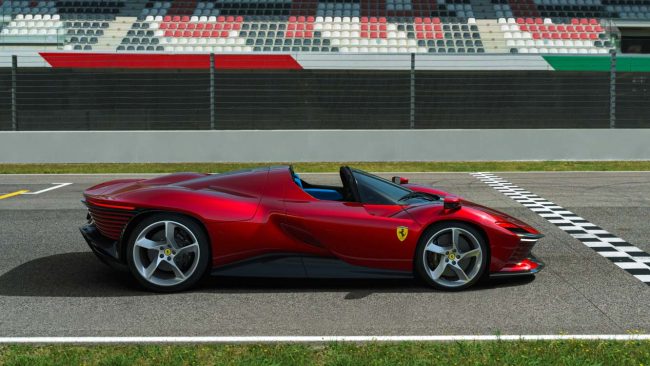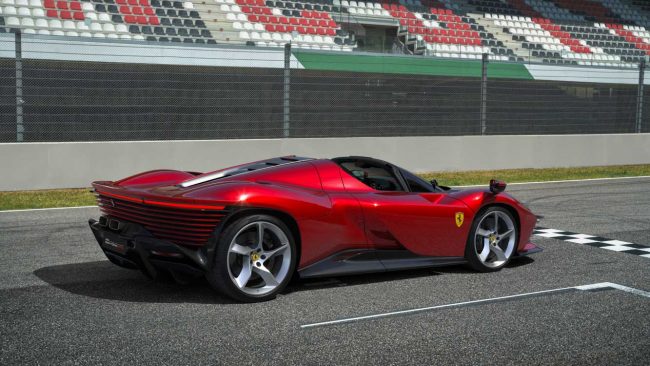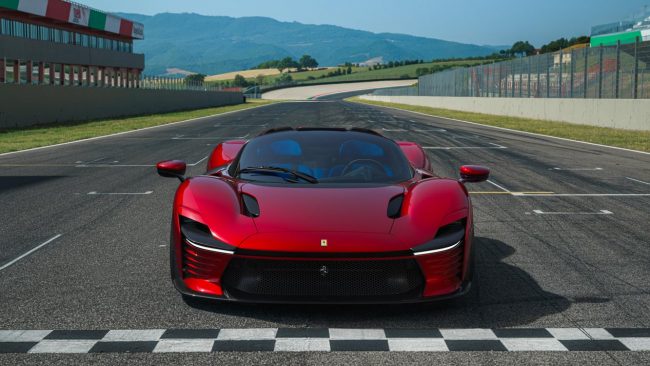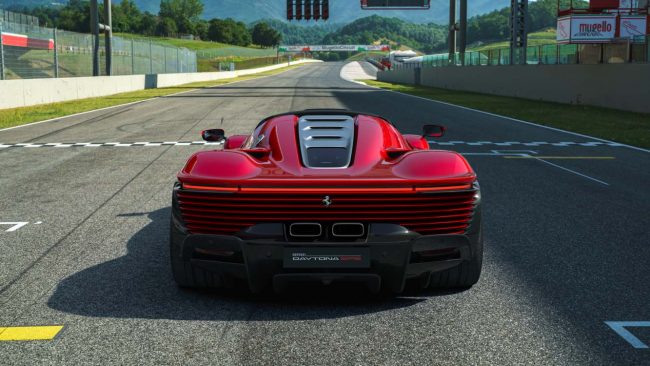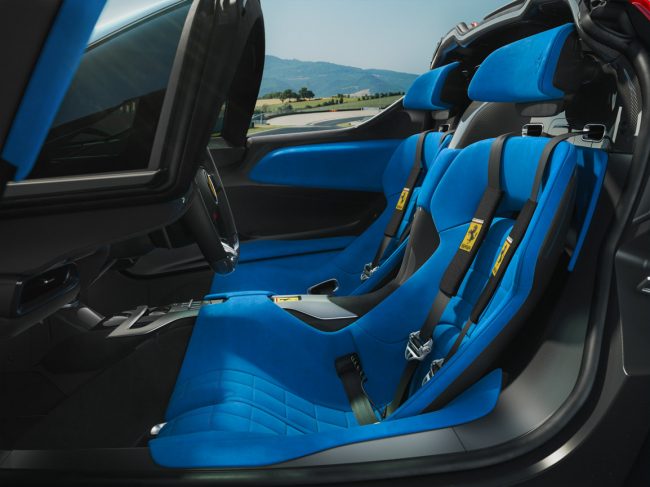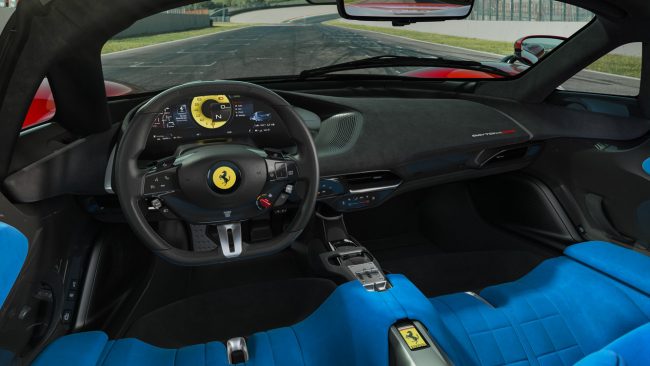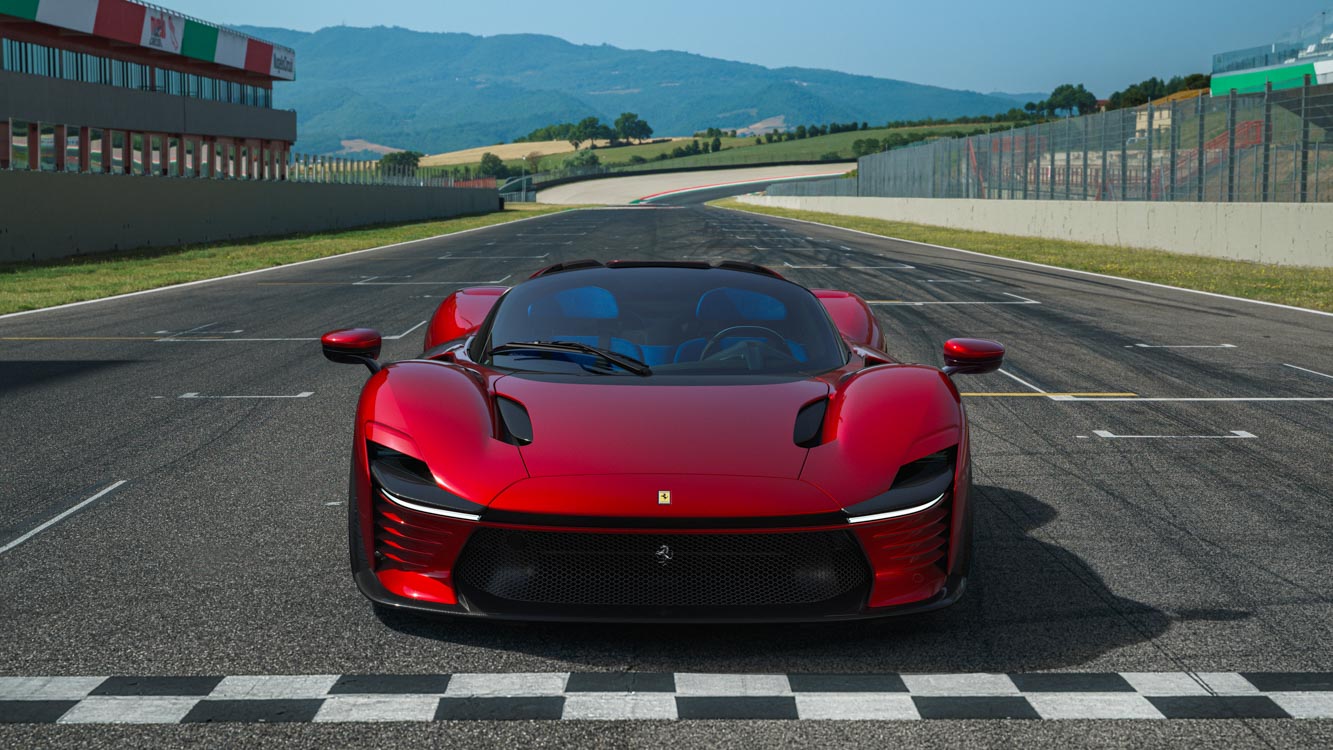
Daytona SP3:The New ‘Icona’ Inspired By The Legendary Victories of Maranello’s Sports Prototype
The Daytona SP3’s design is a harmonious interplay of contrasts, sublimely sculptural, voluptuous surfaces alternating with the kind of sharper lines that revealed the burgeoning importance of aerodynamics in the design of racers such as the 330 P4, 350 Can-Am and 512 S. The bold choice of a ‘Targa’ body with a removable hard top was also inspired by the sports prototype world: consequently, the Daytona SP3 not only delivers exhilarating driving pleasure but also usable performance.
On February 6th 1967, Ferrari pulled off one of the most spectacular feats in its entire history when it took the top three places at the 24 Hours of Daytona in the first round of that year’s International World Sports Car Championship. The three cars that shot past the chequered flag in that legendary side-by-side finish on Ford’s home turf – in first place a 330 P3/4, in second a 330 P4 and in third a 412 P – represented the pinnacle of development of the Ferrari 330 P3, a model that chief engineer Mauro Forghieri had significantly improved in each of the three racing car fundamentals: engine, chassis and aerodynamics. The 330 P3/4 perfectly encapsulated the spirit of the sports prototypes of the 1960s, a decade now considered the golden era of closed wheel racing and an enduring reference point for generations of engineers and designers.
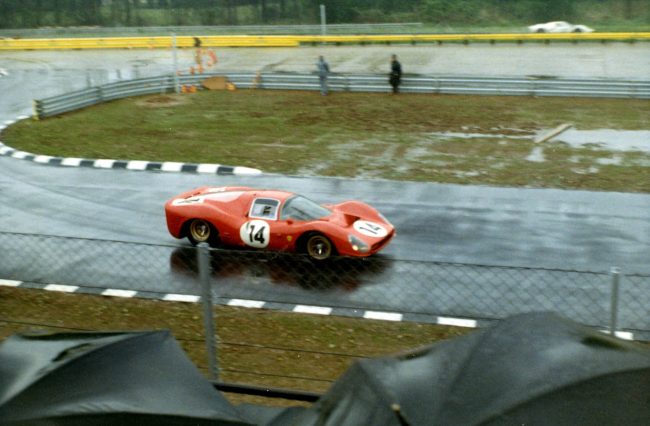
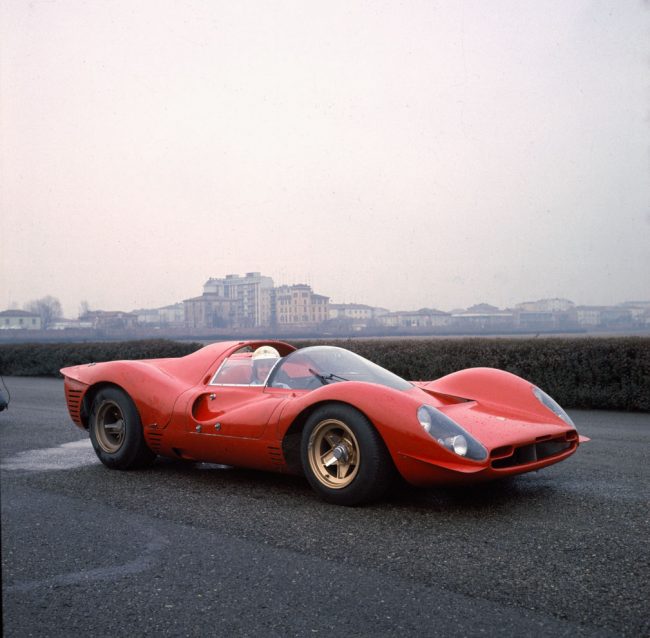
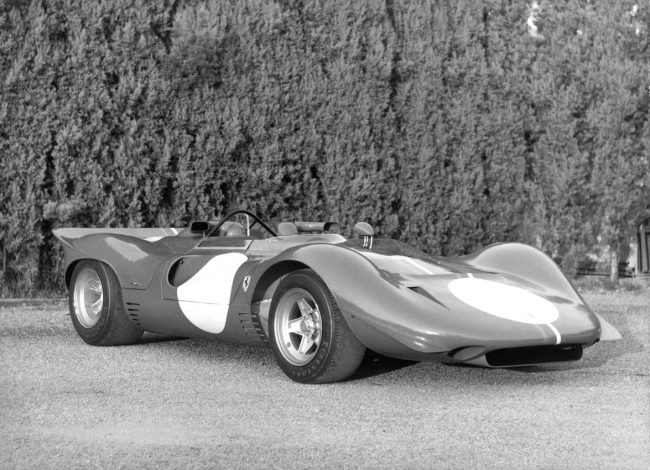
FERR 41 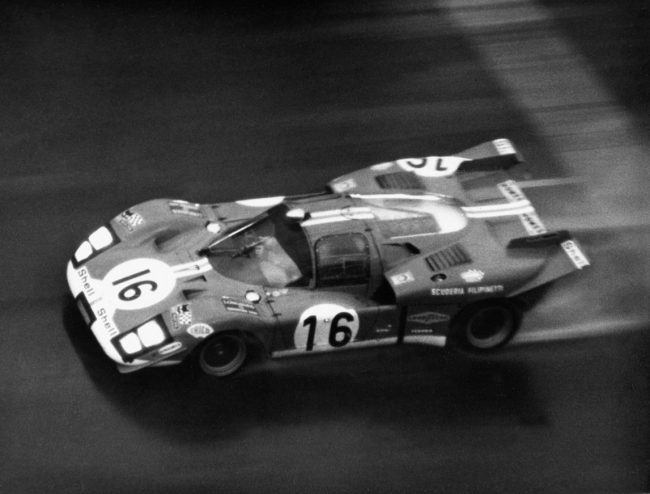
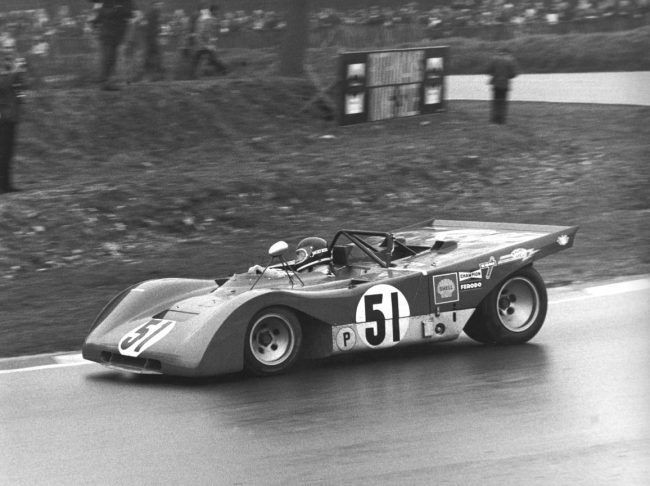
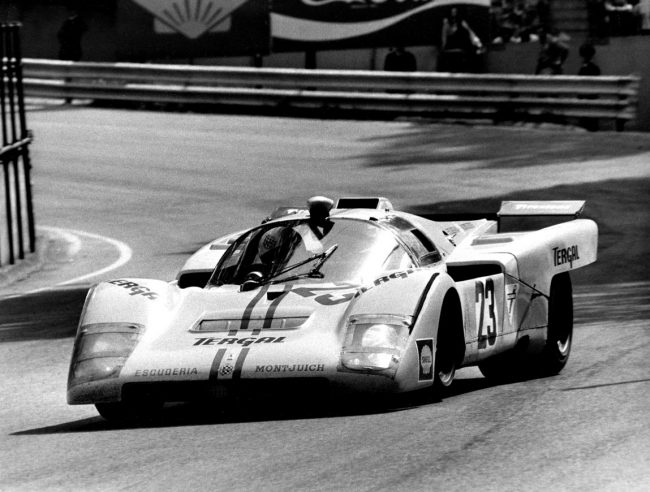
The name of the new Icona evokes that legendary 1-2-3 finish and pays homage to the Ferrari sports prototypes that helped earn the marque its unparalleled motor sport status. The Daytona SP3, presented today at the Mugello Circuit during the 2021 Ferrari Finali Mondiali, is a limited edition that joins the Icona series which debuted in 2018 with the Ferrari Monza SP1 and SP2.
DAYTONA SP3
– V12, Naturally Aspirated
– Mid-Rear Mounted
– 840cv, 697Nm @ 9500RPM
The chassis is built entirely from composite materials using Formula 1 technologies that have not been seen in a road car since the LaFerrari, Maranello’s last supercar. The seat is an integral part of the chassis to reduce weight and guarantee the driver a driving position similar to that of a competition car.
The engine has a 65° vee between its cylinder banks and retains the 6.5-litre capacity of its predecessor, the F140HB, sported by the 812 Competizione from which it inherits its upgrades. All the developments enhance the performance of a powertrain that sets the new benchmark for its category thanks to its astonishing soundtrack – obtained through targeted work on both the intake and exhaust lines – and the 7-speed gearbox, which is now even faster and more satisfying than ever thanks to the development of specific strategies.
Maximum revs of 9,500 rpm and a torque curve that rises rapidly all the way up to maximum revs gives occupants the feeling of boundless power and acceleration. Particular attention was lavished on reducing the engine’s weight and inertia by adopting titanium con rods, which are 40% lighter than steel, and the use of a different material for the pistons. The new piston pins have a Diamond Like Carbon treatment (DLC), which reduces the coefficient of friction to improve performance and fuel consumption. The crankshaft has been rebalanced and is now also now 3% lighter.
The Daytona SP3 is the most aerodynamically efficient car ever built by Ferrari without resorting to active aero devices. Because of the clever integration of these technical innovations, the car can accelerate from zero to 100km/h in 2.85s and from zero to 200km/h in just 7.4s: exhilarating performance, an extreme set-up, and the intoxicating V12 soundtrack deliver completely unparalleled driving pleasure.
ARCHITECTURE
To ensure that Daytona SP3 drivers feel entirely at one with their car, its engineering draws heavily on the ergonomics expertise Maranello has developed in Formula 1. The fact that the seats are integrated into the chassis means that the driving position is lower and more reclined than in the other Ferraris in the range. In fact, the position is very similar to that of a single-seater. This helped reduce weight and keep the car’s height to 1142 mm, which in turn reduces drag. The adjustable pedal box means each driver can find the most comfortable position.
The Daytona SP3’s steering wheel features the same Human-Machine Interface (HMI) already seen on the SF90 Stradale, Ferrari Roma, SF90 Spider and 296 GTB, continuing the Ferrari “hands on the wheel, eyes on the road” philosophy. Touch controls mean that drivers can control 80% of the Daytona SP3’s functions without moving their hands, while a 16” curved HD screen relays instantly all driving-related information.
Both the Daytona SP3’s chassis and bodyshell are made entirely from composite materials, a technology derived directly from Formula 1 that delivers excellent weight and structural rigidity/weight ratio. In order to reduce the car’s weight to an absolute minimum, lower the centre of gravity and guarantee compact architecture, several components, such as the seat structure, were integrated into the chassis.
Aeronautical composites were used, including T800 carbon-fibre for the tub which was hand-laid up to guarantee the correct amount of fibre for each area. T1000carbon-fibre was used in the doors and sills, and is essential to cockpit protection as its characteristics make it ideal for side impacts. Kevlar® was also used for areas which are most subject to impact, thanks to its resistance characteristics. Autoclave curing techniques mirrors that of Formula 1, taking place in two phases, at 130° C and 150° C, with the components vacuum-bagged to eliminate any lamination defects.
A specific tyre was developed with Pirelli for the Daytona SP3: the new P Zero Corsa was optimised for both dry and wet performance with a particular focus on the car’s stability in low grip situations. The new Icona is also equipped with the latest version of Ferrari’s SSC – 6.1 – which, for the first time on a mid-rear-engined V12, includes the FDE (Ferrari Dynamic Enhancer) to increase cornering performance. This lateral dynamics control system acts on the brake pressure at the callipers to control the car’s yaw angle in on-the-limit driving and can be activated in ‘Race’ and ‘CT-Off’ modes on the Manettino.
The adoption of a mid-rear architecture and composite chassis also optimised weight distribution between the axles, concentrating the masses around the centre of gravity. These choices, combined with the work done on the engine, deliver record-breaking weight/power ratio and 0-100 km/h and 0-200 km/h acceleration figures.
7-YEARS MAINTENANCE
Ferrari’s unparalleled quality standards and increasing focus on client service underpin the extended seven-year maintenance programme offered with the Daytona SP3. Available across the entire range, the latter covers all regular maintenance for the first seven years of the car’s life. This scheduled maintenance programme for Ferraris is an exclusive service that allows clients the certainty that their car is being kept at peak performance and safety over the years. This very special service is also available to owners of pre-owned Ferraris.


